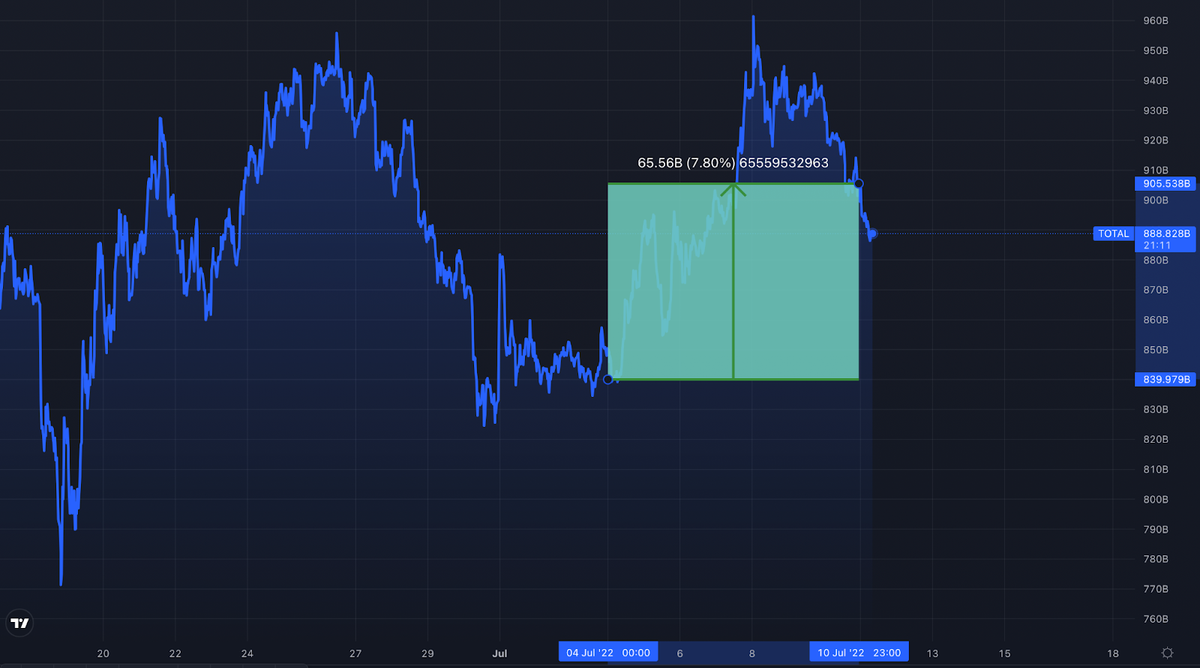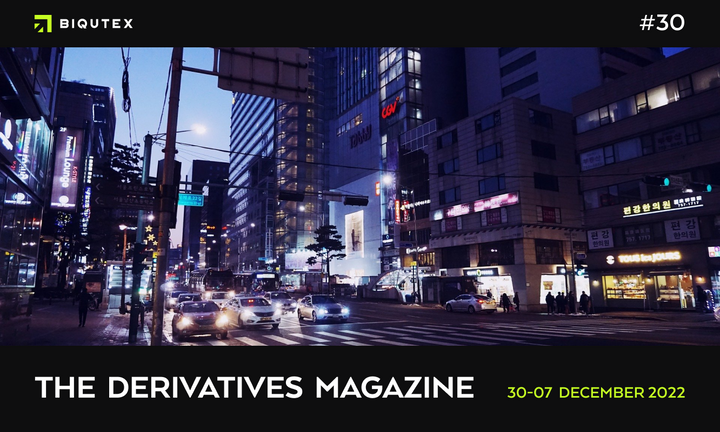The Derivatives Magazine #9

Last week was one of the most positive weeks for the crypto market in the last few months. After rising to around USD 950 billion in total capitalisation over the weekend, prices corrected slightly and posted a final weekly gain of 7.8%, rising to just under $900 billion. The rise in cryptocurrencies correlated with the rise in the equity market ahead of the second quarter corporate earnings release.
In the absence of significant volatility, the liquidation volume remained within typical market values. Bitcoin price stabilisation above 20 000 and a local rise to just below 22 000 led to an increase in short positions liquidations, which amounted to around 250 million on Thursday and Friday.
For bitcoin perpetual swaps, the funding rate continues to decline and is fixed around the market average of 5-6%. The lack of a significant increase in the rate indicates that traders’ risk appetite has decreased – they are using less short-term debt capital. At the same time, there has been an increase in trading volume on the most liquid exchanges, while the open interest level has not increased at the same rate. Open interest for swaps on Binance increased by 18% to 2.16B, while daily trading volume increased by 30%. This trading pattern indicates numerous speculative “quick trades” designed to collect and lock in profits from small movements in low volatility.
According to Laevitas, one of last week’s leaders in turnover was Okex futures contracts with expiration dates in late September and December. While most other platforms saw little change in the level of open interest, Okex futures saw increases of 50% and 100% respectively. This activity could be linked to the intensive arbitrage of funding rates between different exchanges and instruments, as last week the respective parameters were at their lowest values on that particular exchange. Cross-platform arbitrage and risk-neutral strategies are becoming an increasingly popular tool for generating returns in the current market environment, where there are far fewer long-term investors than short-term traders.
Despite the stabilisation of liquidity flows in the market and the relative calm there, the overall non-dynamic situation conceals significant capital movements. The overall volume of BTC futures trading was almost unchanged over the week, as well as the level of open interest. The slight decline in performance over the weekend underlines the low volume of liquidity from traditional financial companies, which are historically more asset intensive on working days, especially at the end of the week.
In terms of macro analysis, the following patterns can be highlighted: stablecoin volumes on exchanges remain much higher than a year ago, bitcoins on public addresses continue to decline, and ether has seen significant inflows to exchanges.
The resulting relative equilibrium indicates that there are plenty of resources available to redeem future possible market declines. Reduced liquid supply from the major cryptocurrency is also providing local support to the crypto market. The influx of ether to addresses could be linked to the deployment of DeFi strategies from leading neobanks such as Nexo and Celsius, which have large altcoin coverage on decentralised banding services.
As part of the overall position deleveraging in the crypto market, many analysts believe the situation has passed the equator and the biggest losses as well as bankruptcies have already happened. Several important macroeconomic indicators will be released this week that might influence further central bank rate decisions – US CPIs (Wednesday), US Retail Sales (Friday). However, after the June rate hike surprise from the Fed, bidders are laying a 0.75% hike in current prices and may only be disappointed in case of quite disastrous data.
This overview was prepared by the analytics department of the Biqutex crypto derivatives exchange



